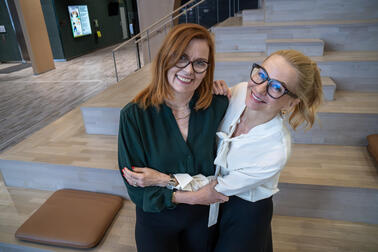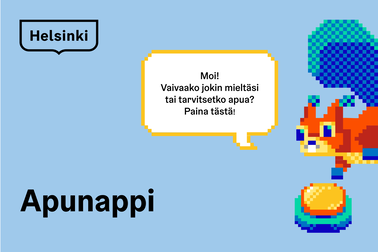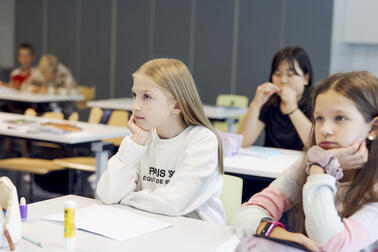
Wellbeing work in the Education Division will be carried out through communal student welfare. This means that the whole community invests in an operating culture where everyone from children and learners to teachers feels safe, included and healthy. Collective wellbeing work is supported by individual student welfare, such as school social worker and psychologist services, maternity and child health clinic services, school health care and multidisciplinary expert groups.
Based on a report published by the Finnish National Board of Education (in Finnish)(Link leads to external service) in the spring, individual and corrective work is still highlighted in student welfare in Finland and communal student welfare requires further development. The City of Helsinki has been actively focusing on communal student welfare for several years now. The communal student welfare development project involving pre-primary education, basic education and upper secondary education operators was started in March 2023. The project has now been completed.
Development to meet identified needs
The project, funded by the Ministry of Education and Culture, involved Finnish- and Swedish-language daycare centres and schools. All of them have significantly strengthened communal student welfare from within the educational institution.
“The core objective of the Communal Student Welfare Project was to find new, functional solutions to implement communal student welfare, respond to identified needs and promote the inclusion of learners and their parents and guardians,” Project Manager Linus Andler says and continues:
“Much like communal student welfare, the project work itself was about co-creation from the start. Project staff members were on site in daycare centres and schools and worked side by side with teachers and other staff.”
An inviting sense of community
Communal student welfare is not only developed through projects but also strengthened as part of the daily operations of the education system. In Helsinki, the aim is to ensure that the voice of children and learners in particular is heard better in the future. During the project, genuine efforts were made to do things such as strengthen emotional and interaction skills, promote the Anti-bullying Programme and focus on means and structures for inclusion. However, the long-term development project facilitated an effective and systematic focus on ideas and solutions, experimentation and sharing.
The principals who presented their activities in the final seminar had this to say about the significance of listening to children and young people: “What would be the point of developing something without including the heart of the activities, our learners, in the process?”
When it comes to education, the wisdom usually lies with the learners themselves. As a good example of this, children in pre-primary education gave their definition of a good friend in a video message in the final seminar:
“A good friend asks you to come along and do things together.”
The successes of the development work were clearly evident in the speeches and the reactions of the audience at the final seminar. According to the opening words by the leaders of the wellbeing work at the Education Division Niclas Rönnholm, Riina Ståhlberg, Vesa Nevalainen and Nina Malaska, the project was among the most effective ones in the whole of the Education Division.

Joint development as part of daily life at schools
Long-term participatory development will allow people to truly commit to a communal operating culture, ensuring that the measures remain a part of daily life. The project strengthened the communal approach in the everyday operations of daycare centres and schools. It also encouraged professionals to see themselves as active developers of their daily work. The experiences of safety, equality, inclusion and wellbeing that were achieved will further improve factors such as the development of teaching in communities in educational institutions.
Communal student welfare has been and will continue to be developed from the perspective of children and young people – together. Project Manager Linus Andler summarises the core and power of communal work:
“If you want to move fast, do it alone. If you want to go far, do it together.”


